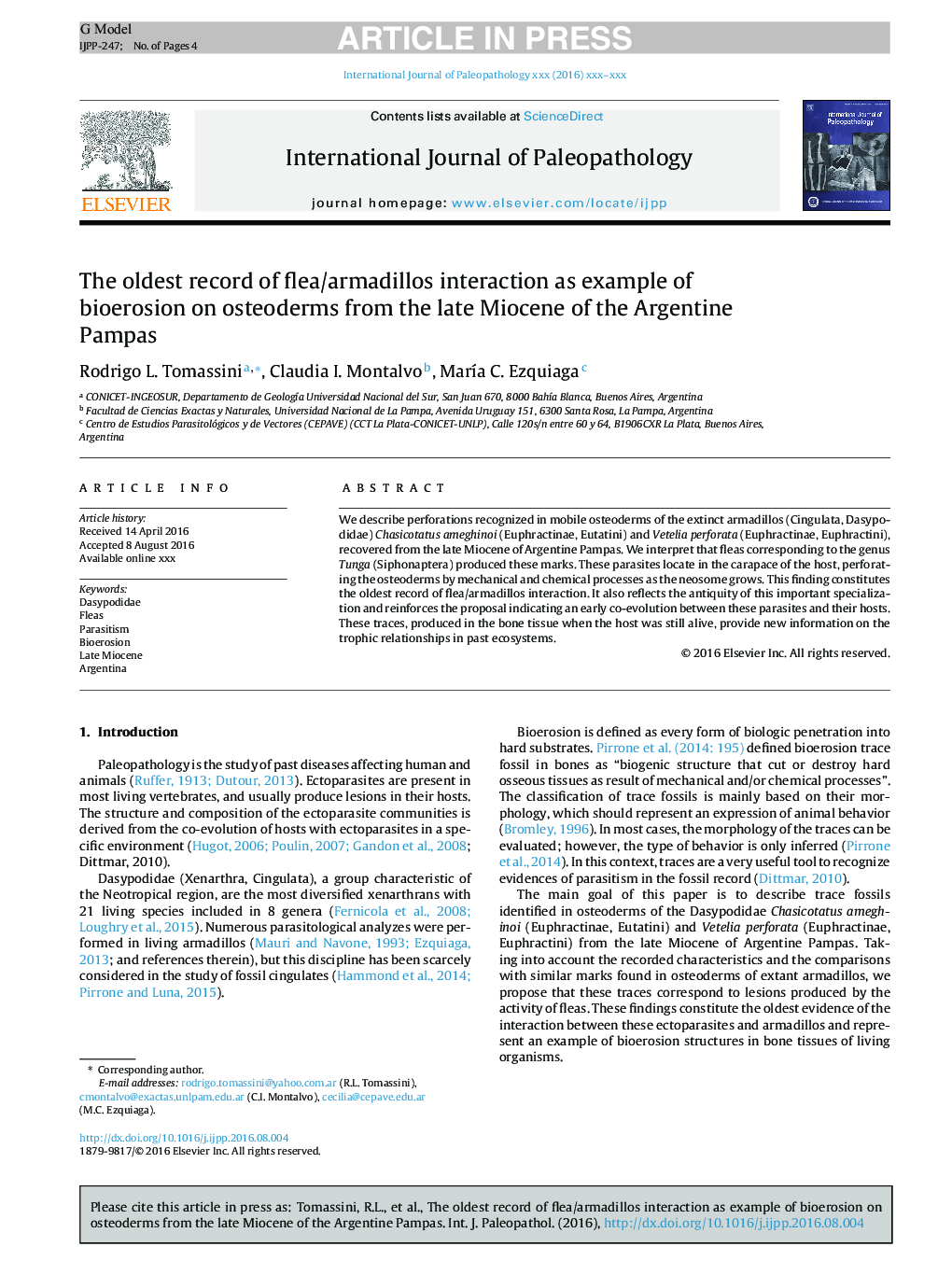| Article ID | Journal | Published Year | Pages | File Type |
|---|---|---|---|---|
| 4760580 | International Journal of Paleopathology | 2016 | 4 Pages |
Abstract
We describe perforations recognized in mobile osteoderms of the extinct armadillos (Cingulata, Dasypodidae) Chasicotatus ameghinoi (Euphractinae, Eutatini) and Vetelia perforata (Euphractinae, Euphractini), recovered from the late Miocene of Argentine Pampas. We interpret that fleas corresponding to the genus Tunga (Siphonaptera) produced these marks. These parasites locate in the carapace of the host, perforating the osteoderms by mechanical and chemical processes as the neosome grows. This finding constitutes the oldest record of flea/armadillos interaction. It also reflects the antiquity of this important specialization and reinforces the proposal indicating an early co-evolution between these parasites and their hosts. These traces, produced in the bone tissue when the host was still alive, provide new information on the trophic relationships in past ecosystems.
Related Topics
Life Sciences
Biochemistry, Genetics and Molecular Biology
Physiology
Authors
Rodrigo L. Tomassini, Claudia I. Montalvo, MarÃa C. Ezquiaga,
